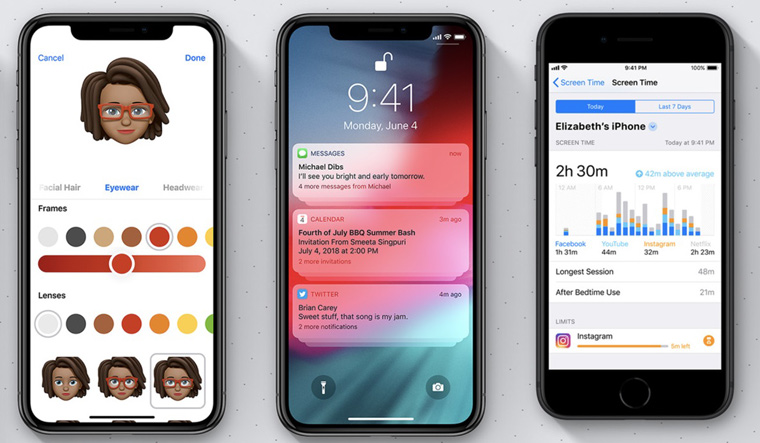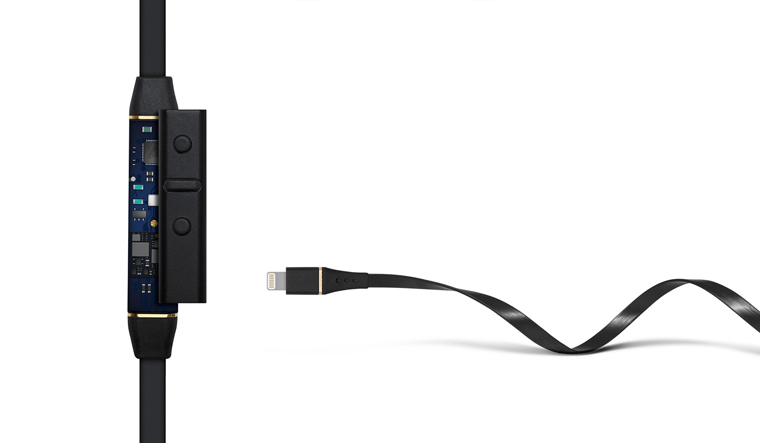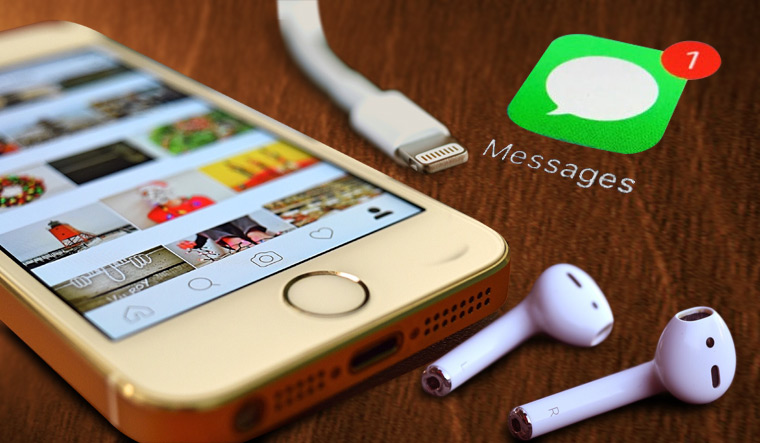While Apple has always been at the forefront of innovation when it comes to computing and tablets, people have always run it down for over-the-top pricing and stubbornness to accept mistakes.
But Apple―and to a great extent, Steve Jobs―was known for its bold decisions, which were, in fact, ahead of their time. Starting from something small like denying support for Adobe Flash on iPhones due to its poor performance to the far more important move to CD-ROM and Universal Serial Buses (USB) from the ageing and ancient floppy drive technology. But no decision has created an uproar like it did in the smartphone space. What started as a way to build more compact smartphones with a non-replaceable battery and touch-friendly UI (at the time of stylus’) turned into a trend that every other manufacturer tried to copy, especially with the notched display and no-headphone jack. While Apple had its reasons to remove the said features, the backlash they faced wasn't profound. The iPhone X needs a notch because there is genuinely no space for the camera and other sensors. Most knock-offs come with bezels thicker than the iPhone, have a massive chin and yet keep a notch (because users see it as a premium feature). What is sad is a company like Xiaomi has managed to create its own version of bezel-less smartphones by incorporating the camera into the small chin below the phone. Despite those innovations, manufacturers are at it with their Apple imitation and, ultimately, it is Apple that gets fingers pointed at for starting such a trend.
ALSO READ: Best smartphone under Rs 8,000 in India
Another reason for the heat directed at Apple is their pricing and their insistence on the whole line-up being an ecosystem. Most users are used to having a Windows desktop/ laptop and an Android smartphone. It gets the job done without burning a big hole in the pocket. Add to that the plethora of third-party accessories from headphones, chargers, power banks and a lot more. With Apple, things are different. The Apple Watch is designed to work perfectly with only the iPhone. The Airpods have all the functionality that it boasts of only when paired with an Apple device. Add in the main devices themselves from the iPhone, iPad and Mac and you know that once you get into Apple, you are heading to be a part of its own system. For someone coming from a build-as-you-like Windows system, this may sound ridiculous.
But, beyond that, the value factor that most Android users talk about and the sheer customisability and range of devices available in different sizes and shapes will always tilt the scales in favour of Android (and the market share also suggests the same). Despite that, people, who actually use and are a part of the Apple ecosystem, have some strong reasons for not jumping over to the dark side (or light side if you are an Android user).
Let's look at some of these reasons.
The obvious ones: Security and Updates
The fact that most heads of states and superstars around the globe flaunt an iPhone is reason enough for people to believe in the amount of security and privacy that the iPhones provide.

This begins with the most common mode of a security threat: apps. Apple allows apps on the iPhone to be installed from only one source―their app store. This not only prevents, but completely removes any chance of tampering by third party (malicious) apps. Android, with its open source nature, allows you to install apps from just about anywhere―Play Store or any shady store.
Take passwords and fingerprints. Apple integrates hardware-based security called the “Secure Enclave” which is basically a small computer with its own processor and storage that works independently from your phone’s operating system. This lets it keep all security keys on the hardware itself, keeping hackers away. Add to that the fool-proof Face Unlocking with hardware-based facial recognition and you really don't have to worry about your phone being accessed by anyone else without your permission.
Software updates are another thing Apple is famous for. Not only is it quick on the take, but it also supports devices much longer (at least five years) than most Android phones. This provides you with the latest enhancements in software and design as much as keeping you protected from any vulnerabilities and threats that are newly discovered.
Fragmentation is an issue that plagues Android, but due to Apple’s tight control over its devices, iPhones have no such issues. In fact, a Statista report shows that iOS 11, the newest iteration of iOS, reached 65 per cent of iPhones while Android Oreo was present on only 1 per cent of Android Phones. That is a stark difference when it comes to new software reaching devices and the gap is only widening.
Ray of light: Lightning connector
While Apple has ditched the Lightning connector in its iPad and MacBooks, it retains the port on the iPhone for good reason―it's amazing functionality. While most Android lovers and open-standard advocates will argue in favour of the USB-C port, the fact is that USB-C is more complicated and messier than an existing lightning standard that Apple has. In fact, not all manufacturers implement all the listed features that USB-C offers―from data transfer, bi-directional charging, video playback and more. Even if you looked past the demerits of USB-C, you’d have noted that the lightning connector is much slimmer than the offering from USB. And slim connectors enable slim profiles for devices, something Apple takes immense pride in.
 Audeze’s Cipher cable enables Hi-Res audio through your iPhone’s lightning connector
Audeze’s Cipher cable enables Hi-Res audio through your iPhone’s lightning connector
Talking about the lightning connector in comparison to the headphone jack, if you ignore the flak Apple got, the decision was rather fine. Removing the ancient headphone jack not only makes room for other features, but also lets you take better advantage of high-quality audio. This is due to the shift from the analogue 3.5mm jack to a digital lightning connector which allows for lossless 48kHz sound output. The connectors ability to output power as well allows you to use some powerful headphones with the iPhones, apart from enabling some cool functionality like noise cancellation without an external battery.
Walled Garden: Better apps and seamless experience across devices
People outside the ecosystem always talk about Apple having a walled garden with a close control on their products and accessories that go with it. While that may seem authoritative, there’s no denying that the user experience with Apple products is amazing.
As for software, Apple has some strict guidelines when it comes to app submissions, but the end user is bound to enjoy a better quality. This also allows Apple to keep a tab on rogue apps and malware from entering your device. Among other benefits is the fact that new games and apps debut first on the iOS platform (the popular game Fortnite, for instance). Even for third-party accessories like gimbals and toys you get a far-greater user experience with better controls and options, unlike the mostly-buggy Android versions.
The walled garden experience also allows a far more seamless connection across devices too. Take the AirPods and iPhone’s connection procedure. All you have to do is open up the case of the AirPods and that's it, the phone will connect wirelessly and you can start your groove.
Finally, you wouldn’t mind shelling out a lot more for the ecosystem for a hassle-free user experience.
iMessage―the blue-eyed boy of Apple devices
While the world has no shortage of internet messengers with Google itself experimenting with a new one for every Google I/O, Apple users fiercely stand by iMessage which has become a gold standard for messaging due to its useful features like group messaging, read receipts, cross-platform support, Wi-Fi functionality, stickers and emojis. Also, iMessage being a stock app available out of the box makes it that much easier to handle without having to fiddle around with downloads on the app store. Apart from security, updates and the ecosystem, iMessage remains one of the biggest reasons why there has been no mass exodus to Android, despite their phones getting better over the years in terms of features, performance, security and price.
There are other reasons, too, for picking the iPhone platform like many better-developed software features. Gesture navigation, that debuted on the home button-less iPhone X, for example, was seamless and easy to get used to. That can’t be said about Google’s comparable implementation in Android Pie or any of the other devices from OnePlus or Xiaomi.

And how can we forget specifications? Android smartphone fans love to talk about multiple cores and RAM and many camera sensors but Apple isn't always keen on such things. That doesn't mean it uses substandard processors, rather it focuses on optimisation. Apple iPhones have traditionally had almost half the core count when compared to their processor designed for Android. They also have had almost half the RAM and still belittle every single Android smartphone in benchmarks and raw performance. This is an important point not just in the context of iPhones but also smartphones in general where better specifications (or large numbers) are assumed to be the measure of a better smartphone. That's never the case as after testing, it has been found that bigger numbers do not always translate into a better experience.
Benchmarks, number of cores, RAM are all numbers and may not always translate into the experience that you desire.
For sheer user experience bundled with the points above, iOS and iPhone stand apart. That’s why the discerning people flock to Apple.



